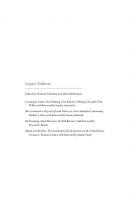Schooled Society: An Introduction to the Sociology of Education 9780199024889, 019902488X
The Schooled Society examines how education has come to occupy a central place in society and how its function and form
2,075 132 5MB
English Pages [312] Year 2018
Recommend Papers

- Author / Uploaded
- Scott Davies
File loading please wait...
Citation preview
OXFORD
(
Fourth Edition
�� �. �� ;j 0 e��
An Introduction to the Sociology of Education
Scott Davies Neil Guppy
I
-
.E Q;
a.
-:5 ·�
-c C1! ....
.§
a. C1! cr:
- ..0 0 .... 0 ..c c..
Figure 4 . 1
The One-Room Schoolhouse and the Modern School
Top: Ebu rne School, 1 908. Eburne i s now part of Vancouver. Bottom: Earl Haig Secondary School, Toronto, 2006.
62
Part II Selection: Inequality and Opportunity
for eight or so years of their lives, where they attained basic literacy and numeracy and received instruction in the rudiments of (Christian) religion and citizenship. In the twentieth century, school populations exploded. As provinces estab lished departments of education, one-room schoolhouses were gradually replaced with modern buildings of a far more bureaucratic, standardized character. This helped create a more uniform, "mass" form of schooling. The rationalized processes of the modern world were playing out as foretold by Max Weber. The average size of a Canadian school increased from 66 students in the 1920s to 156 in 1960 to 350 by 1970 (Manzer, 1994). With the construction of these new buildings, enrolments soared. New norms emerged. It was now common for parents to enrol their children in local schools, al though in rural areas not all did. But to capture the changing experience of school ing, we need to examine the historical record more deeply. As we implied above, enrolments are not the same as actual school attendance. In earlier eras, many chil dren did not attend full-time because they worked on family farms or did other labour. For this reason, historians have given special attention to attendance rates (see Gidney and Millar, 2012; Katz and Mattingly, 1975). They estimate that in 1867, the year of Confederation, only about four in 10 registered pupils would attend on any given day. While some youngsters would have steady attendance for, say, six months of the year, they would disappear from schools when needed for farming, fishing, or trapping. Further, many schools did not offer instruction for children younger than seven. In the early 1930s, just over half of six-year-olds were in school and only 20 per cent of five-year-olds attended classes. Compulsory starting ages for schooling did not drop to ages five and six until later. As shown in Figure 4.2, elementary schooling did not offer most young people a common experience until the 1930s. Only then was attendance more regular and predictable. Most students began school at age six, attending most days in non-summer months. The rate of change accelerated again after 1950, and by the 1960s full attendance in public elementary and high school was almost complete. However, even as late as 1951 more than half of Canada's population age 15 and older had not attained even a Grade 9 level of schooling, as seen in Figure 4.3. Amid the economic boom of the post-Second World War a new mindset emerged among policy-makers in Canada and elsewhere. They actively promoted more schooling for longer periods of life. In this era the concept of education as an economic engine for the nation began in earnest (and this is when the human capital theory of educational investment was first proposed). Assessing the immediate post-Second World War period, several trends emerge. First, the completion of elementary years had become nearly universal. By the mid-1960s, almost every Canadian-born youth completed at least the equiva lent of Grade 8. Second, high school graduation became a benchmark of attain ment. Rather than seeking full-time jobs in their mid-teens, most young people completed high school. The term "high school dropout" emerged as a new symbol of deviance. Whereas between 10 per cent and 20 per cent of current age cohorts
4 Education Revolutionized
63
80 ...2:ro 0 C") c:
60
""C
c: Q) �







![Power, politics, and society: an introduction to political sociology [2 ed.]
9781138553491, 9781138553507, 9781315148618](https://ebin.pub/img/200x200/power-politics-and-society-an-introduction-to-political-sociology-2nbsped-9781138553491-9781138553507-9781315148618.jpg)

